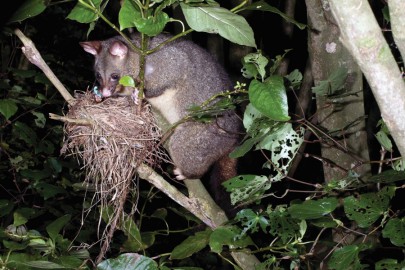Eradicating the last 5%

We aim to establish what enables some pest animals to survive controls
Predator control routinely removes approximately 95% of a target population. However, New Zealand’s Predator Free 2050 initiative requires scientific breakthroughs to achieve 100% eradication of rats, mustelids, and possums.
While 95% eradication typically cost $20–$30 per hectare, 100% costs over $400 (e.g. pest eradication from Rangitoto and Motutapu Islands cost $1,200 per hectare). The prohibitive cost of eradicating the last 5% using current technology is a barrier to New Zealand achieving our Predator Free 2050 eradication goal.
As well as being hugely expensive to remove the last 5% in a pest population, survivors remaining in an area with plentiful resources are likely to breed successfully and at close to their maximum rates, meaning that they act as a source for rapid population growth and expansion. This, in turn, means that more money has to be spent on controlling them, and so the cycle of control continues.
The 5-year MBIE programme ‘Eradication Science', which began in October 2019, is focused on the careful study of behaviours among pest populations to offer solutions to these problems. The fundamental questions addressed by the programme are:
- what makes survivor individuals survive control?
- do they have predictable behavioural characteristics (why do these animals not take baits or enter traps when 95% of their species do)?
- how can we manipulate those behaviours using novel cues or combinations of cues to overcome survival behaviours?
The research now underway will enable land managers to achieve eradication cost-effectively, rather than the current paradigm of sustained (costly) predator control. Unlike sustained control, the environmental benefits of eradication continue in perpetuity. By negating the need for ongoing control, eradication will also dramatically reduce the need for repeated applications of toxins.
We believe we can reduce the cost of eradication by at least 25%, as fewer control devices would be used due to increased device encounter rates, and shorter times would be needed due to increased device interaction rates.
Our collaboration with Māori and Moriori partners will ensure that our research responds to their priorities – a first for predator tools research in New Zealand – and that any approaches we develop are culturally relevant and appropriate for use on the whenua.
